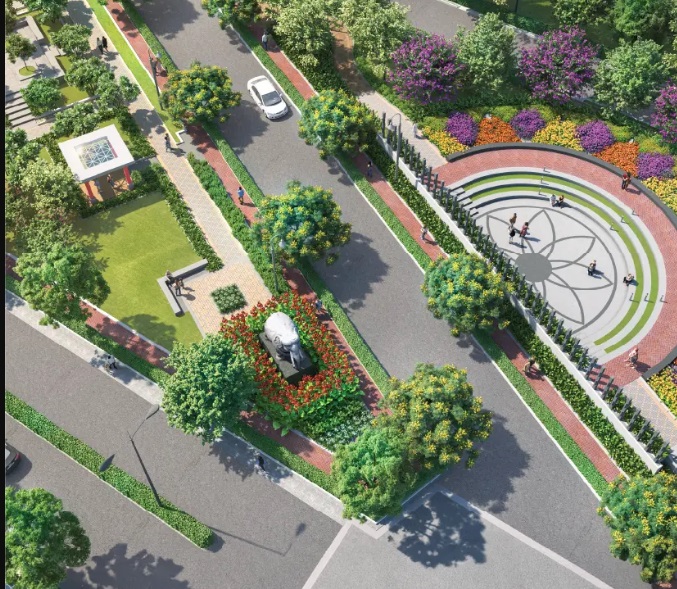CMDA or DTCP-approved plots in Chennai, which is the best for you? Let’s get into the blog to understand better.
Chennai’s major planning authorities for real estate development in various capacities are the Chennai Metropolitan Development Authority (CMDA) and the Directorate of Town and Country Planning (DTCP).
They are both mainly linked to the Country Planning Act, though the scope and power of the two are not the same.
The objective of this article is to create awareness among the readers by explaining the meaning and difference between CMDA and DTCP.

What is CMDA or DTCP?
The Chennai Metropolitan Development Authority (CMDA) is currently empowered to control real estate development in the Chennai Metropolitan Area (CMA) by the issuance of Planning Permissions (PP) granted under the Tamil Nadu Town and Country Planning Act of 1971 under Section 49.
However, the Directorate of Town and Country Planning (DTCP) is responsible for implementing developmental schemes and controlling town planning in the whole of Tamil Nadu, excluding CMA, by the Town & Country Planning Act (T&CP Act), 1971 promulgated by the Tamil Nadu Government.
CMDA or DTCP: A Guide to Approvals and Processes of CMDA
1. The CMDA extends power to the local authorities in CMA(Chennai Metropolitan Area) for providing PPs (planning permissions) for buildings, and such buildings come under categories of residential, industrial, commercial, institutional, and other purposes as its sub-divisions, small layouts, and so on.
2. Direct permission is needed by the CMDA for multi-story and special buildings, IT/ IT/ ITES structures, and other building classifications.
3. Currently, this is much easier as guidelines have been developed under PP and the procedure has been set.
4. These have to be obtained before initiating construction activities, and the permits are valid for three years from the date issued by CMDA.
5. Permissions are provided to the builders who have complied with the requirements of the Detailed Development Plan or the Master Plan for the usage of the land.
6. Once the approvals are in place, the builder needs to make sure the project is completed within the timeframe specified in the permit.
7. Should CMDA find any anomalies in statutory approvals for the disputed land, it will revoke its permits.
8. Those developers who start building without getting the required licenses run the danger of having their project labeled as illegal. This can result in major repercussions, including property sealing, demolition, or stay orders being issued.
CMDA or DTCP: What are the facilities and procedures of DTCP?
Planning and building up both cities and farms is the job of the Directorate of Town and Country Planning. Here is a list of all the tools and steps that are involved with DTCP.
Facilities provided by DTCP:
- DTCP creates and implements comprehensive master plans for both rural and urban areas to ensure appropriate land use. These plans can help direct the development of commercial, residential, industrial, and recreational buildings.
- Layout Approvals: The DTCP gives its approval to layouts for business, industrial, and residential developments. For these plans to be legal, they have to follow zoning rules, building codes, and infrastructure needs.
- Building Plan Approvals: Developers must submit building plans to the DTCP for approval. The DTCP reviews these plans to ensure they meet the required standards for safety, aesthetics, and functionality.
- DTCP controls land development to stop illegal building and guarantees that every development follows the approved designs and rules.
- DTCP supervises the delivery of basic infrastructure including roads, drainage systems, water supply, and sewage systems in recently built projects.
- DTCP tracks ongoing building to guarantee adherence to authorized plans. Calling for stop-work or beginning demolition, can prevent illegal building.
Procedures Followed by DTCP:
- Application Submission: Developers must submit an application to the DTCP for land use, layout, or building plan approvals. This covers all required paperwork, including proposed blueprints, land survey information, and evidence of ownership.
- Scrutiny of Applications: DTCP reviews the application and scrutinizes the submitted documents and plans. It checks for compliance with zoning laws, building codes, environmental regulations, and other statutory requirements.
- Site Inspection: DTCP may sometimes do a site inspection to make sure that the information in the application is correct and that the land is suitable for the planned development.
- Approval or Rejection: Based on the scrutiny and site inspection, DTCP either grants approval or rejects the application. Should the proposal be approved, the developer can get rights to construct. If the application is denied, the developer has to address the issues highlighted and resubmit it.
- Once the building starts, DTCP monitors the project to guarantee it follows the approved proven plan. Any change made to the approved plan could lead to fines or orders to stop proceeding further.
- DTCP does a last inspection and certification once the building is finished. As long as the project satisfies all the required conditions, DTCP grants a completion certificate to the property therefore enabling its legal occupation.
- Violation Management: DTCP is authorized to implement measures against unauthorized developments, such as the issuance of stop-work orders, the imposition of penalties, or the order for the demolition of illegal structures.
What are the risks for CMDA- or DTCP-approved plots?
Buyers can request DTCP or CMDA numbers for projects. Developers frequently include it in their authorized layout blueprints. They may request copies and notify the project and developer if the numbers are missing. If you have any concerns about approval, you should get legal advice. Buyers should always wait for the developer to get CMDA or DTCP permission before finalizing their acquisition of any property.
Plots are restricted to either DTCP or CMDA; they cannot be classified under both, as there is a jurisdictional issue. Getting DTCP certification is easier, unlike CMDA permission, which requires more time and more stages.
What are the advantages of investing?
According to reports, plots that have been authorized by the CMDA are expected to experience a greater price appreciation in the future than those that have been approved by the DTCP. The consistent expansion of Chennai city has resulted in the inclusion of numerous DTCP locations under the CMDA. In comparison to the configurations approved by DTCP, CMDA has a more extensive future layout and access to additional funding. The price appreciation of CMDA properties is purportedly higher due to their proximity to metropolitan areas or city limits.
CMDA or DTCP, what is the difference?
While both institutions aim to make real estate development more accessible to the general people, they differ in significant ways. Here are some key differences between CMDA and DTCP:
| DTCP | CMDA |
| The majority of Indian states have distinct DTCP departments for rural and urban planning. | Only operating in Chennai. |
| Responsible for issuing land use licenses and building approvals. | Responsible for issuing construction permits for residential, institutional, commercial, and industrial zones. |
| Required for the construction of any building | Essential for multi-story constructions. |
| In contrast to conventional real estate permits, it offers straightforward solutions for obtaining permissions and certifications. | Permits are more difficult to obtain than traditional real estate permits. |
| There is no specified timeframe. | Restricted to a three-year validity |
| Building agreements are considered illegal in the absence of DTCP permission for land. | If the CMDA approval is not approved, the structure is considered illegal. |
CMDA plots appear to be better investment alternatives because they are within the city’s borders. However, there are also attractive investment prospects for homes in DTCP areas. CMDA plots may be seen as a safer bet, given that the approval process is more thorough.

